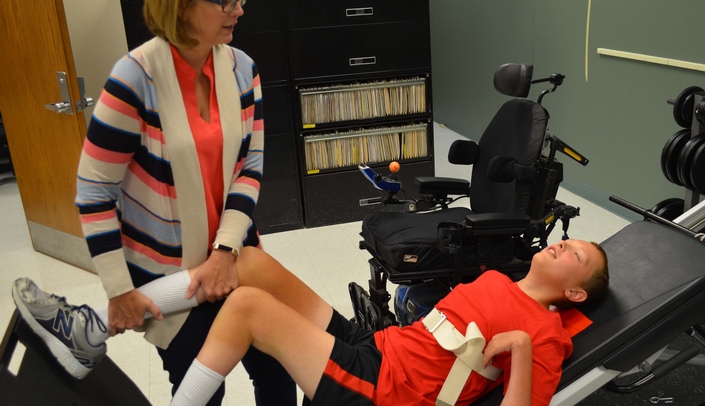The University of Nebraska Medical Center Munroe-Meyer Institute (MMI) and Louisiana State University Health Sciences Center New Orleans are collaborating on a research study to compare two different types of physical therapy for children with cerebral palsy.
Max Kurz, Ph.D., of MMI and Noelle Moreau, Ph.D., of Louisiana State, are examining the benefits of power training, a treatment more related to muscular function, and an action-perception approach that stresses movement planning.
"One of the problems with cerebral palsy is that muscles are not working very well," Dr. Kurz said. "It could be that they're weak, or they're not generating muscular contractions as fast.
"But from our brain imaging data, we also find that kids have trouble planning the motor actions that they're producing. So even before anything is generated, they have problems orchestrating to generate the output, which says that the problem is really in the planning period, and it spills over to the action."
Dr. Moreau, who worked as a postdoctoral fellow with Diane Damiano, Ph.D. — considered a pioneer in strength training for children with cerebral palsy — said that muscle power seems to be a key ingredient for improving walking in kids with cerebral palsy.
The study will comparing power training to action-perception training. The researchers will look at changes on the cortical level, where the power-training outcomes will be based on muscle plasticity.
"No one has ever investigated sensorimotor cortical changes associated with power training, so this is an exciting area of research," Dr. Moreau said. "Also, how are the changes different in the action-perception vs the power training?"
The key is comparing the beneficial results from both types of treatment, Dr. Kurz said. "I think both paradigms will improve mobility, and that's our big goal, to make kids better, more mobile so they can move within their communities and school," he said. "But what we're trying to see is how big a 'bang for the buck' are we getting with these two approaches."
At one session, Ethan, a high school junior with CP, was power-training with MMI physical therapist Heidi Reelfs. Using a specially designed weightlifting tool, he worked first the right leg, then the left, then both, straining to straighten them through sets of five reps, with Reelfs at times adding more weight.
"It's good," he said of the three-day-a-week regimen. "It's better than being in the swimming pool. I don't like putting my head under water."
Kirstin, Ethan's mother, said the study is an opportunity to do a different type of therapy. "And it helps people learn how to treat and help people with cerebral palsy," she said, adding that she'd noticed Ethan had increased strength in his legs.
The Munroe-Meyer Institute currently is enrolling subjects for the study. Contact Kurz at 402-559-9599 or mkurz@unmc.edu for more information.
